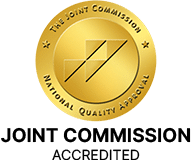Are you or a loved one struggling with inhalant addiction? You’re not alone. Inhalant abuse affects thousands of Americans, especially young people.
But there’s hope. In this article, we’ll explore inhalant addiction and treatment options in South Florida. We’ll cover:
- What inhalants are and their types
- Side effects of inhalant use
- Inhalant abuse symptoms
- The effects of inhalant addiction
- Signs of inhalant withdrawal
- How to treat inhalant addiction effectively
Let’s dive in and learn how you can start your journey to recovery from inhalant abuse today.

Table of Contents
What Are Inhalants?
Inhalants are substances that produce mind-altering effects when their vapors are breathed in.
These are often common household products that are misused for their intoxicating effects. They work by rapidly affecting the central nervous system, leading to a quick but short-lived high.
What Is Inhalant Abuse?
Inhalant abuse, also known as ‘huffing’ or ‘sniffing’, is the intentional inhalation of chemical vapors to get high. Users may breathe in these substances through their nose or mouth in various ways.
For instance, they may sniff or inhale the fumes from a rag soaked in chemicals. Alternatively, they may spray aerosols directly into the nose or mouth or inhale the substance from balloons filled with it.
This type of substance abuse is particularly dangerous. That’s because many of these products are readily available and legal to purchase, which makes it easy for young adults to access.
How Common Is Inhalant Abuse?
According to the National Institute on Drug Abuse (NIDA), inhalants are most commonly abused by young people. However, there’s little data and research on how widespread this addiction is in Florida. That could be due to how versatile the effects of inhalants are on people.
Types of Inhalants
Inhalants can be categorized into four main groups:
Volatile Solvents
These are liquids that vaporize at room temperature. Examples include:
- Paint thinners and removers
- Gasoline
- Glues
- Cleaning fluids
- Correction fluids
- Nail polish removers
Aerosols
These are sprays that contain propellants and solvents. Common aerosol sprays include:
- Spray paints
- Hair sprays
- Deodorant sprays
- Cooking oil sprays
- Fabric protector sprays
Gasses
These include medical anesthetics and household or commercial products. Examples are:
- Nitrous oxide (‘laughing gas’)
- Chloroform
- Propane tanks
- Butane lighters (lighter fluid)
Nitrites
Often called ‘poppers’ or ‘snappers’, these are a class of inhalants that mainly affect the body by dilating blood vessels. Examples include:
- Amyl nitrite
- Butyl nitrite
What Are the Side Effects of Inhalant Use?
Recognizing the signs behind the use of inhalants allows you to identify if someone is struggling with this form of substance abuse. Below are some telltale symptoms to watch for:
Physical Signs
- Chemical odors on breath or clothing
- Paint or other stains on the face, hands, or clothes
- Nausea or loss of appetite
- Weight loss
- Red or runny nose
- Bloodshot eyes and lightheadedness
- Sores around the mouth
Behavioral Signs
- Appearing drunk or disoriented
- Slurred speech
- Lack of coordination
- Irritability or mood swings
- Unusual excitability or excessive laughing
- Depression or anxiety
Other Indicators
- Missing household products (aerosols or solvents)
- Hiding rags, clothes, or empty containers of potential inhalants
- Decreased performance at school or work
What Does Inhalant Addiction Look Like?
Inhalant addiction is a serious substance use disorder that can develop from repeated inhalant abuse. It’s characterized by a compulsive need to use inhalants despite negative consequences.
Behavioral Changes
People struggling with long-term inhalant use often exhibit a preoccupation with obtaining and using inhalants. They may spend significant time and money acquiring substances like solvents, aerosols, or nitrites.
Their inhalant addiction will severely impact their daily life as well. Users might neglect responsibilities at work, school, or home. They may withdraw from social activities, experience relationship problems, or even engage in risky behaviors.
Physical Changes
As the addiction progresses, individuals develop a high tolerance. They’ll need more of the substance to achieve the same high. This can lead to increased use and higher risks of adverse effects.
Additionally, users might frequently smell of chemicals, have paint stains on their clothes or skin, or keep suspicious items like empty aerosol cans or plastic bags.
They may also experience strong cravings and withdrawal symptoms when not using, such as nausea, tremors, and mood swings.
Finally, the long-term effects of inhalant abuse include serious health issues, like brain damage, liver and kidney problems, and heart failure.
What Are the Signs of Inhalant Withdrawal?
For users who have been engaging in long-term inhalant abuse, suddenly stopping or reducing use can lead to uncomfortable withdrawal symptoms. That could be the following:
- Intense cravings for inhalants
- Abdominal cramping and nausea
- Excessive sweating
- Strong migraines
- Tremors or convulsions
- Feelings of irritability and tension
How to Treat Inhalant Addiction
Treating inhalant addiction will differ from one individual to another, depending on their needs. Here are several effective treatment options:
Medical Detox
Detoxification is often the first step in treating inhalant addiction. During this process, the body clears itself of the toxic substances.
Medical supervision is mandatory during detox to help manage withdrawal symptoms. Those can include nausea, tremors, and mood swings.
Healthcare professionals can also provide support and medication to ease these symptoms and ensure a safe detox process.
Inpatient Rehab
For severe cases of inhalant addiction, inpatient treatment at a specialized treatment center may be necessary.
This intensive approach provides 24/7 care and support. It also removes the individual from environments that might trigger substance abuse.
Finally, inpatient programs typically last 30 to 90 days. They include a combination of therapies and activities designed to promote recovery.
Outpatient Rehab
Outpatient treatment can be effective for individuals with less severe addictions or those transitioning from inpatient care.
These programs allow patients to live at home while attending regular therapy sessions and support groups.
This option also provides flexibility for those who need to maintain work or family commitments during treatment.
Individual Therapy
One-on-one therapy sessions with a mental health professional are an integral part of inhalant addiction treatment.
Cognitive behavioral therapy (CBT), for instance, is often used to help individuals identify triggers. They’ll learn to develop coping strategies and address underlying mental health issues that may contribute to substance abuse.
Group Therapy
Participating in group therapy sessions can provide valuable peer support and opportunities to learn from others’ experiences. These sessions can help reduce feelings of isolation and provide a sense of community in recovery.
Family Therapy
Involving family members in the treatment process can be beneficial. Family therapy in this case can help repair relationships damaged by addiction and educate loved ones on how to support the recovery process.
Holistic Therapy
Complementary therapies, such as art therapy, music therapy, or mindfulness practices, can be beneficial additions to traditional treatment methods.
These approaches can help individuals develop new interests and coping mechanisms to support their recovery journey.
Aftercare and Support Groups
Ongoing support is vital to maintain long-term sobriety. Aftercare programs and support groups, like Narcotics Anonymous, can provide continued guidance and community support after formal treatment ends.
Start Your Recovery Journey Today!
At Recreate Life Counseling, we’re ready to help you recreate your life free from inhalant addiction.
Our comprehensive treatment programs address you as a whole person, and not just your addiction. We offer a range of options, including residential treatment, partial hospitalization, and intensive outpatient programs.
Many of our staff members have experienced the challenges of recovery firsthand. They combine this personal experience with the professional expertise needed to provide compassionate, effective care.
Let’s take the first step towards a healthier, happier you today. Our admissions team is available 24/7 to answer your questions and guide you through the process. Please contact Recreate Life Counseling for additional information about Inhalant Addiction Treatment near you.



